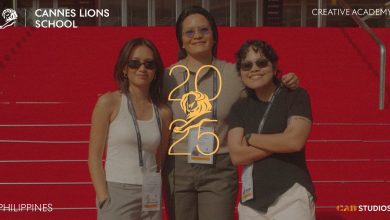MANILA, PHILIPPINES — As of January 2021, more than half of the global population, or some 4.66 billion people worldwide, are considered active internet users. This number will only keep growing with over a million new internet users (NIU) coming online every day through their mobile devices. Notably, many of them wouldn’t be able to use technology at all without voice input.

Voice has proven to be an increasingly essential interaction method for NIU, with over half of smartphone users leveraging voice technology in 2020. Across Google products alone, we see a steady climb in voice usage traffic. While some view voice as a convenient substitute for typing–while working or cooking–voice is in fact critical for many people’s engagement with technology.
For those struggling with lower literacy or certain health conditions, voice technology makes it possible to communicate using their smartphones. Voice is also more efficient as an interaction method including for those who use native scripts as these could be more complex or time-consuming to type on a device.
It is why as part of the process of building products for NIU, Google conducts studies to identify key learnings and principles that can help the tech industry create more inclusive experiences for everyone.
An example is the recently-launched Voice Playbook, which outlines the potential of voice in helping people everywhere interact with technology and the internet.
Voice allows users to juggle between chores, work, and other personal matters that may require digital activity such as online searches or sending messages. On a personal note, I rely on Google Assistant when I need to quickly use the calculator on my Pixel phone while reading an email on my laptop, saving time and energy. Moments like this make me deeply grateful for the wonderful benefits of technology!
However, there are constraints that currently prevent voice products from reaching their full potential. One of which is not considering a person’s breathing pattern. More often than not, when a user pauses in the middle of a voice search to simply breathe, their app or smartphone’s mic shuts down. In addition, text-to-speech output from read-aloud tools is usually presented in long sentences with no pauses, making it difficult to follow or understand. These factors must be considered in designing voice products and experiences.
Voice icons should also be updated and made universal. There are many different voice icons across different apps and some may be too outdated or unrecognizable. For instance, in India and Indonesia, people did not understand what a 50’s style microphone was and how it related to voice functions. The tech industry needs to be more literal about iconography as many users struggle with abstraction. We need to standardize icons for easier adoption by using what’s most familiar.
Many new users are multilingual and yet, current voice technologies haven’t kept up, leading to misinterpretation. This is why voice products should allow multilingual input and provide easy language switching so people can find it much easier to use the feature.
Finally, users should be able to easily find the voice icon or setting on their smartphones. If they can’t find it, they can’t use it. They may miss out on functionalities that can be incredibly beneficial for them.
As more people around the world come online for the first time every day, Google is optimistic that voice features will help make technology more natural, democratic, and useful–regardless of linguistic or technical literacy levels. And with the tech industry continuing to work together, we need to progressively solve for product design and user experience by placing people’s needs and their distinct engagements with technology at the heart of innovation. Voice technology should be an enabler, helping make the internet more equitable and inclusive for everyone.
About the author
 Bernadette Nacario is the Country Director of Google Philippines since 2019. Before joining Google, Bernadette served as the Country Manager for Systems of IBM Philippines, and Apple Philippines and Guam. A veteran in the Information Technology industry with extensive background in General Management, Sales, Marketing, and Channel Management, she held numerous leadership positions at other reputable tech brands such as HP, Microsoft, and Siemens.
Bernadette Nacario is the Country Director of Google Philippines since 2019. Before joining Google, Bernadette served as the Country Manager for Systems of IBM Philippines, and Apple Philippines and Guam. A veteran in the Information Technology industry with extensive background in General Management, Sales, Marketing, and Channel Management, she held numerous leadership positions at other reputable tech brands such as HP, Microsoft, and Siemens.
Bernadette holds a Graduate Diploma in Management from the Helsinki School of Economics (Executive Education). She is a graduate of Polytechnic University of the Philippines with a degree in Accountancy.









